Have you ever taken a flavor trip straight to the heart of the Caribbean? If not, Puerto Rican cuisine is your express ticket! Bursting with bold spices, unique combinations, and hearty ingredients, this culinary style is a celebration in every bite. From the savory goodness of mofongo to the sweet delight of flan, these dishes are a testament to the island’s rich cultural tapestry. Curious? Dive into our article to explore the vibrant, tasty world of Puerto Rican food and find out how you can recreate these tropical favorites right in your kitchen. Let’s get cooking!
What is puerto rican food?
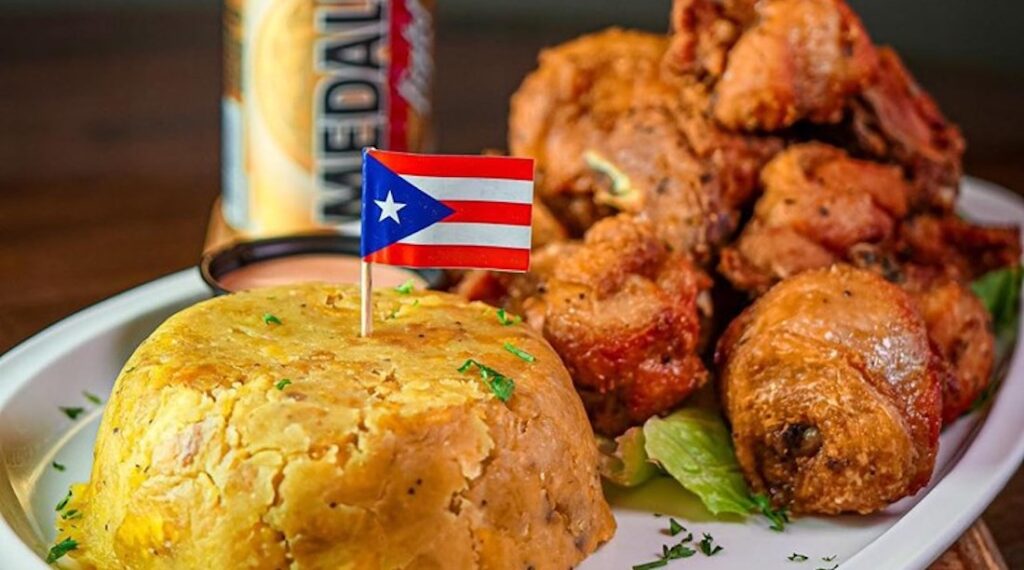
Puerto Rican food, often called “cocina criolla,” is a tasty blend of Spanish, African, and indigenous Taino influences, creating a unique and vibrant culinary tradition. This cuisine is known for its bold flavors, hearty portions, and the liberal use of spices and seasonings that make each dish pop.
Key staples include:
- Plantains and yuca: These are often fried, mashed, or stewed, serving as foundational sides in many meals.
- Rice and beans: A classic pairing, typically seasoned with aromatic blends and often served alongside a main dish.
- Pork: The star protein, featured in iconic dishes like lechón asado (roasted pork) and pernil (slow-roasted pork shoulder).
- Sofrito: A sauce base made from onions, garlic, bell peppers, and a mix of herbs, which provides a flavor foundation for countless dishes.
- Seafood: Given the island’s coastal geography, fresh seafood is prominently featured in the cuisine.
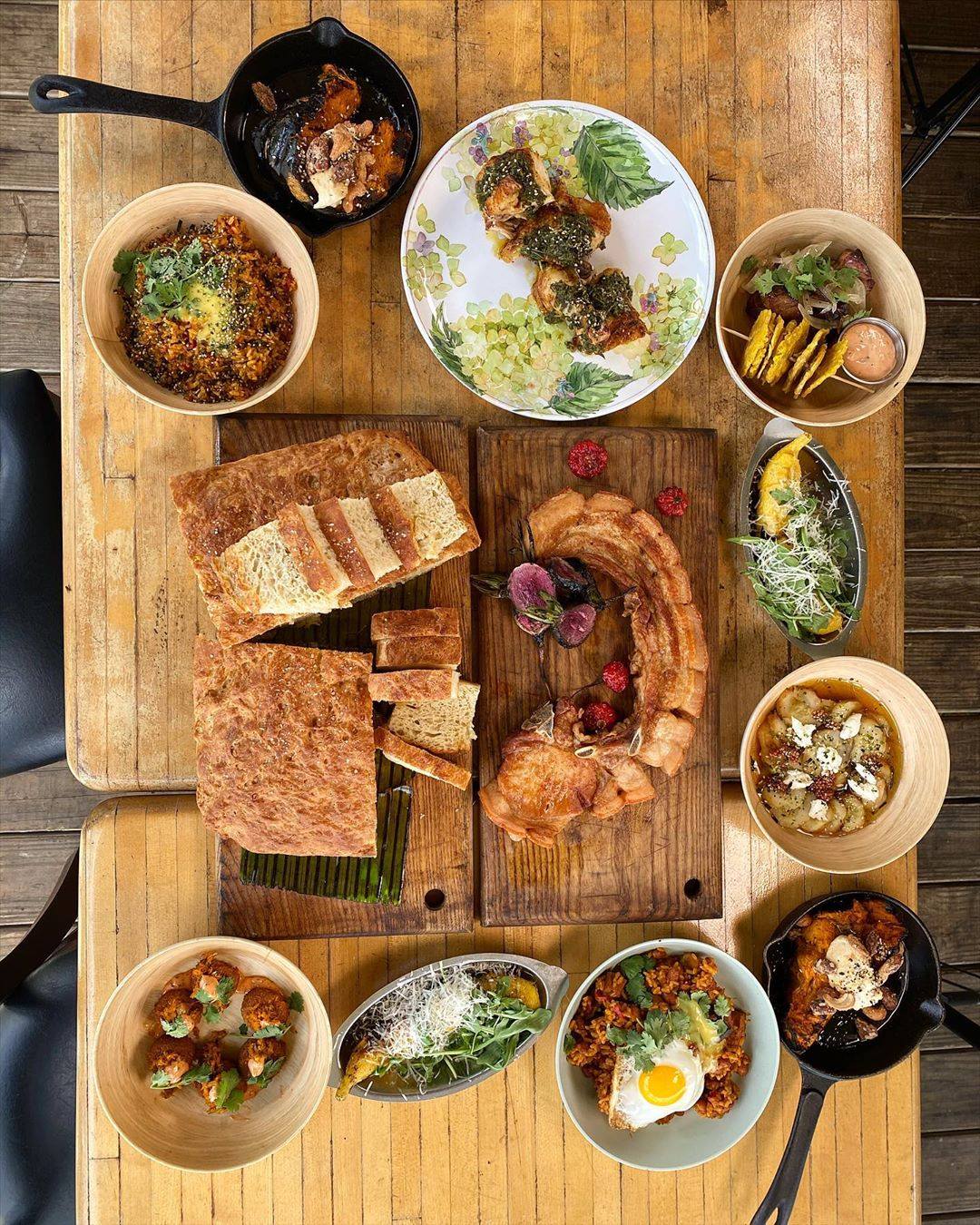
Popular dishes include mofongo (mashed fried plantains with garlic and pork cracklings), arroz con gandules (rice with pigeon peas), and pasteles (similar to tamales, filled with seasoned meat wrapped in banana leaves). Desserts like flan (a caramel custard) and tembleque (a coconut pudding) are also favorites.
What is puerto rican food: it is a celebration of its rich cultural history, always ready to bring a bit of island life to your table with its delightful mix of flavors and textures.
What are Puerto Ricans known for?
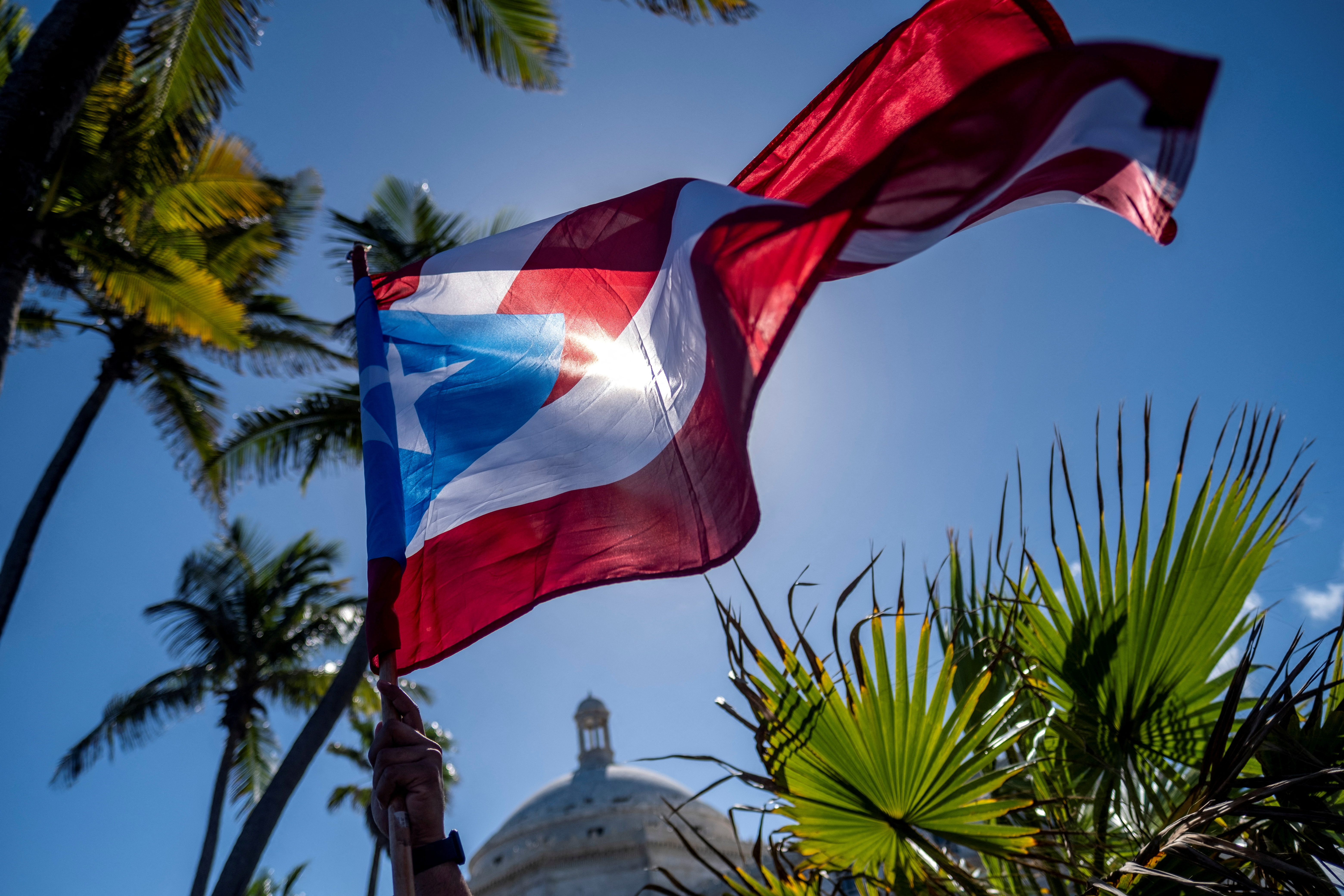
Puerto Rico is celebrated for its deep and diverse cultural heritage that includes contributions to music, art, and cuisine. The island has produced influential figures in music, such as Bad Bunny and Ricky Martin, who have brought Puerto Rican sounds to the global stage. Its art scene reflects a rich history ranging from indigenous influences to contemporary street art, prominently displayed across cities like San Juan.
The natural beauty of Puerto Rico, from the rainforests of El Yunque to the stunning Bioluminescent Bay, draws visitors from around the world. Additionally, the warmth and community spirit of Puerto Ricans themselves are central to the island’s identity, often welcoming visitors with open arms and vibrant local dishes like arroz con gandules. This blend of natural beauty, artistic expression, and community spirit defines what Puerto Rico is known for.
Top 18 Best Puerto Rican Foods
Here’s a list of the top 18 best Puerto Rican foods, each described to give you a taste of this rich culinary culture:
Mofongo:
Mofongo is a staple of Puerto Rican cuisine, crafted from green plantains that are fried, mashed, and mixed with garlic and pork cracklings (chicharrón). The mixture is often shaped into a bowl and filled with a choice of toppings such as seafood, chicken, or vegetables, served with a side of chicken broth for added moisture and flavor. This dish is a perfect example of the island’s love for plantains and pork, offering a delightful texture contrast between the crispy pork and the soft, flavorful plantains. Mofongo’s roots can be traced back to West African cuisine, reflecting the diverse cultural influences that have shaped Puerto Rican food.
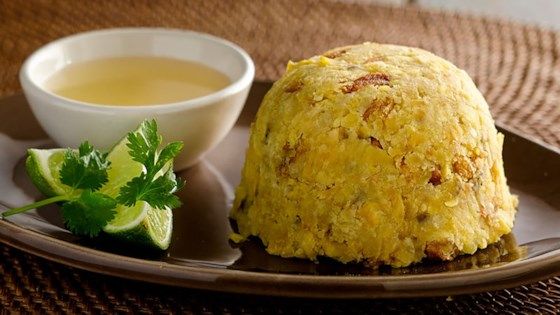
Arroz con Gandules:
This quintessential Puerto Rican dish combines rice, pigeon peas (gandules), and pork, cooked together with a sofrito base of tomatoes, bell peppers, onions, garlic, and cilantro. It’s seasoned with a mix of traditional spices, including coriander, cumin, and oregano, often accompanied by olives and capers for extra flavor. Arroz con Gandules is typically served during celebrations and is considered the island’s national dish. The dish not only represents the agricultural staples of Puerto Rico but also embodies the festive and communal spirit of its people, making it a beloved classic at any gathering.
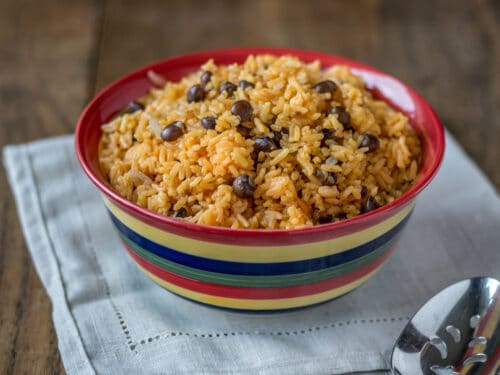
Pernil:
Pernil is a festive and flavorful roasted pork shoulder, marinated in a robust adobo seasoning with plenty of garlic, oregano, and black pepper, then slow-roasted until succulent and tender. The outer skin crisps up to a delicious crackling that contrasts beautifully with the moist, tender meat inside. This dish is a centerpiece at many Puerto Rican celebrations, especially during Christmas and New Year’s. The long marinating and slow-cooking process allows the flavors to deeply penetrate the meat, making pernil a cherished highlight in Puerto Rican culinary traditions.
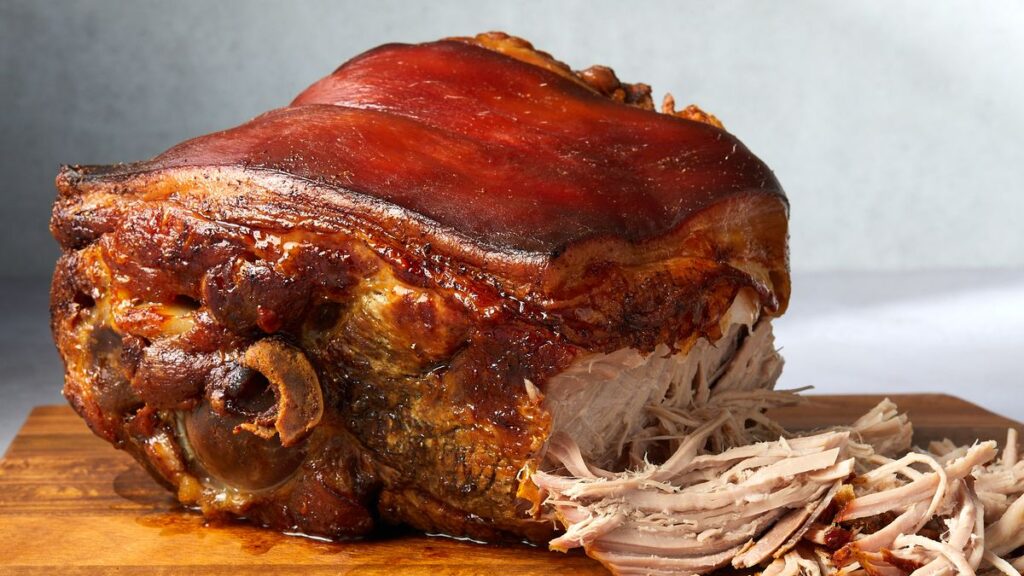
Alcapurrias:
These are tantalizing fritters made from a dough of grated yautía (taro root) and green plantains, filled with a hearty mix of seasoned ground beef, chicken, or crab. After being shaped into cylinders, they are deep-fried to golden perfection. Alcapurrias are a favorite at roadside stands and beach kiosks, where they are enjoyed as snacks or appetizers. The crispy exterior gives way to a soft, flavorful interior, making them irresistibly delicious. This dish showcases the inventive use of local ingredients and the island’s love for deep-fried foods.
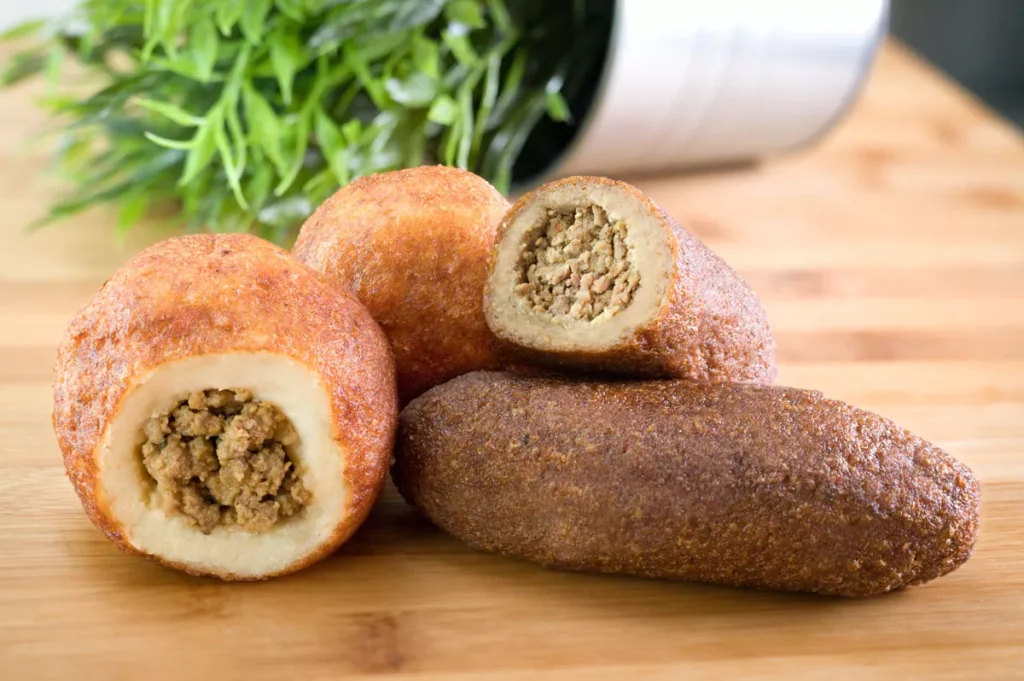
Pasteles:
Pasteles are a traditional holiday food, reminiscent of tamales but unique to Puerto Rican cuisine. They are made with a dough of mashed green bananas, plantains, and sometimes yautía, filled with a mixture of seasoned pork, all wrapped in banana leaves and boiled. The filling is typically marinated in achiote oil, which imparts a vibrant orange color and earthy flavor. Making pasteles is often a communal activity, involving family or community members who gather to prepare them in large quantities for festive occasions, reflecting the communal and celebratory nature of Puerto Rican culture.
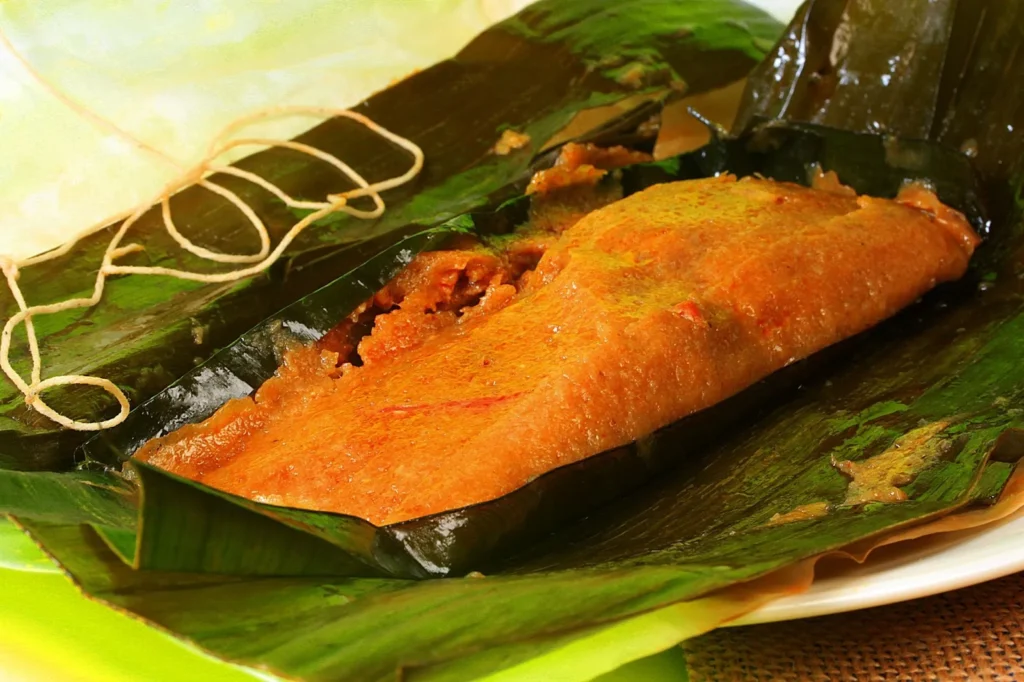
Tostones:
Tostones are a fundamental part of Puerto Rican snacking and side dishes, made from green plantains sliced and fried twice to achieve their signature crispiness. First fried until they are just soft, they are then smashed into flat discs and fried again until golden and crispy.
Often served with a sprinkle of sea salt and accompanied by a dipping sauce such as garlic mojo or a tomato-based creole sauce, tostones offer a perfect crunchy texture with a starchy, slightly sweet flavor. They are a versatile staple that can accompany a variety of dishes, acting as the Puerto Rican answer to French fries, and are universally loved across the island for their delightful crunch and ability to scoop up dips and salsas.
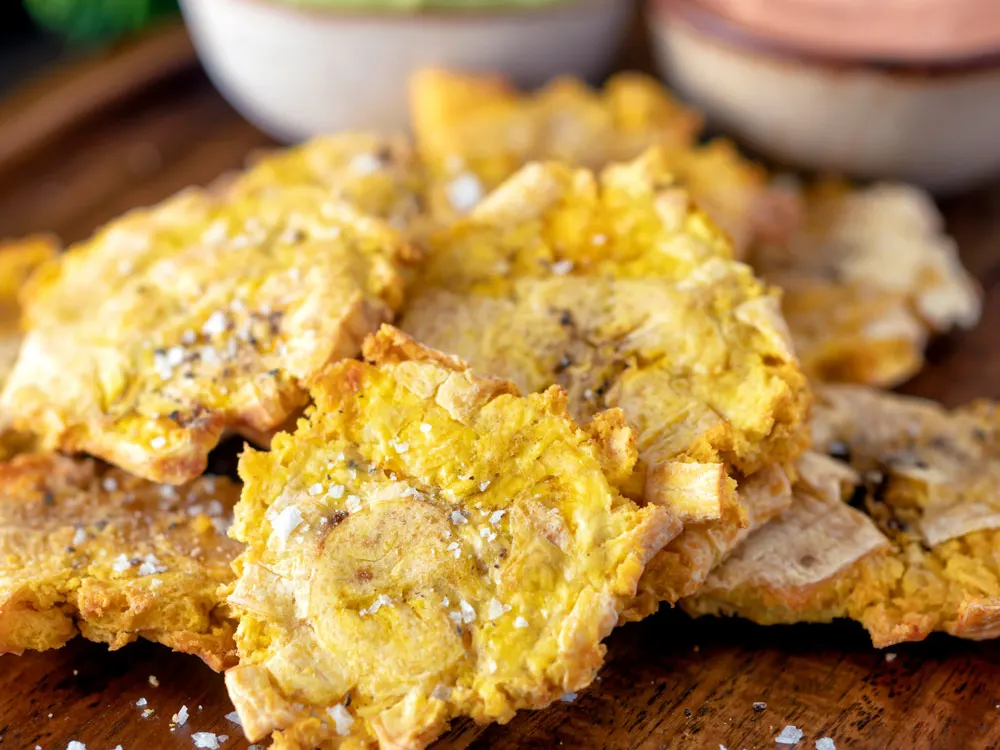
Lechón Asado:
Lechón Asado is the pinnacle of Puerto Rican celebration foods, involving a whole pig slow-roasted over charcoal for several hours until the skin turns into a crispy, delicious crackling. This method infuses the meat with smoky flavors while keeping it incredibly tender and moist. Often marinated with a mix of garlic, oregano, black pepper, and salt, the pork is traditionally cooked on a spit, making it a social food that brings families and communities together.
Served during major festivities like Christmas and large family gatherings, lechón asado is not just a meal but a cultural icon, representing the art of Puerto Rican cooking and the joyous nature of its people’s celebrations.
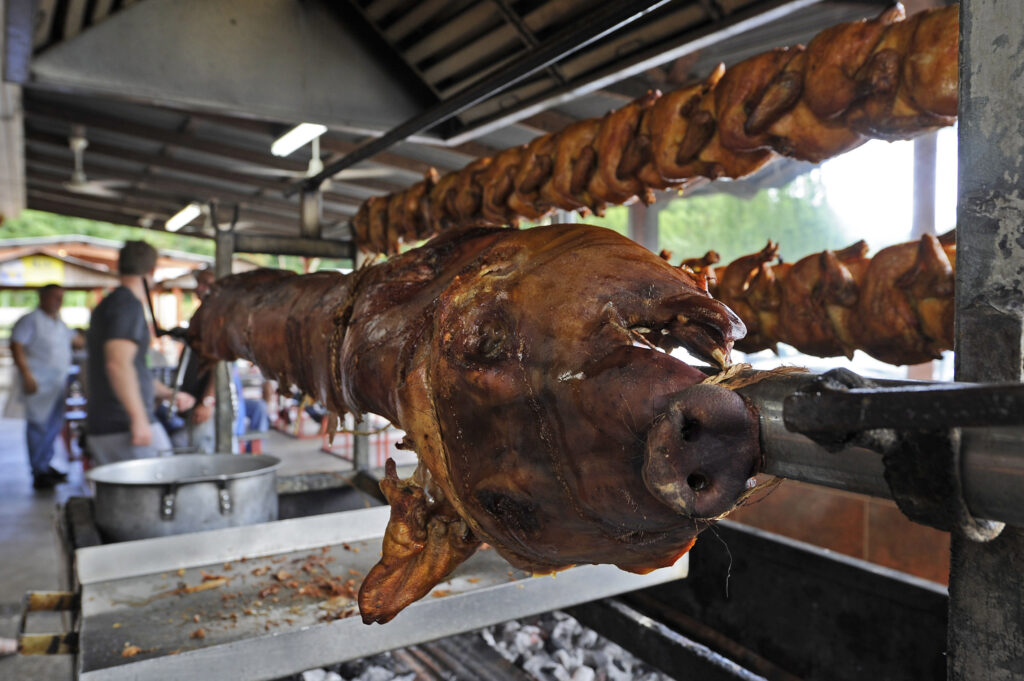
Bacalaitos:
Bacalaitos are thin, crispy salt cod fritters that are a staple at Puerto Rican roadside stalls and food festivals. The cod is first desalted by soaking it in water, then shredded and mixed into a seasoned batter made from flour, baking powder, and annatto, which gives it a distinctive yellow color. Fried until they are crisp and golden, bacalaitos are enjoyed hot, typically garnished with a squeeze of lime to enhance the fish’s flavor. These fritters are a beloved snack by the beach or during a stroll, embodying the island’s love for seafood and its ability to turn simple ingredients into flavorful treats.
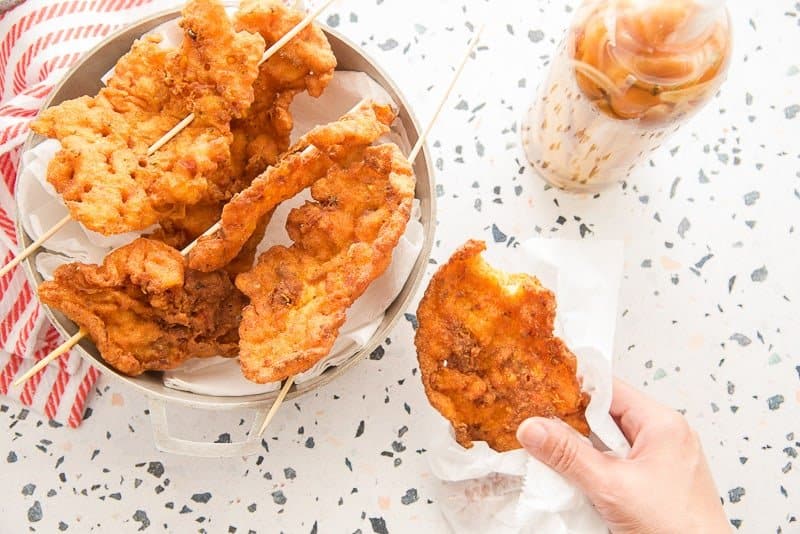
Rellenos de Papa:
Rellenos de Papa are delectable stuffed potato balls, a comfort food favorite across Puerto Rico. Mashed potatoes are formed into smooth, round balls and filled with a savory center of seasoned ground beef, known as “picadillo.” This filling might also include raisins, capers, and olives, adding sweetness and a hint of tanginess to the mix. The stuffed balls are then coated in egg wash and bread crumbs and deep-fried to a golden crisp. Rellenos de papa are commonly served as snacks or side dishes, offering a satisfying crunch that gives way to a warm, flavorful meat filling, making them a perfect treat for any occasion.
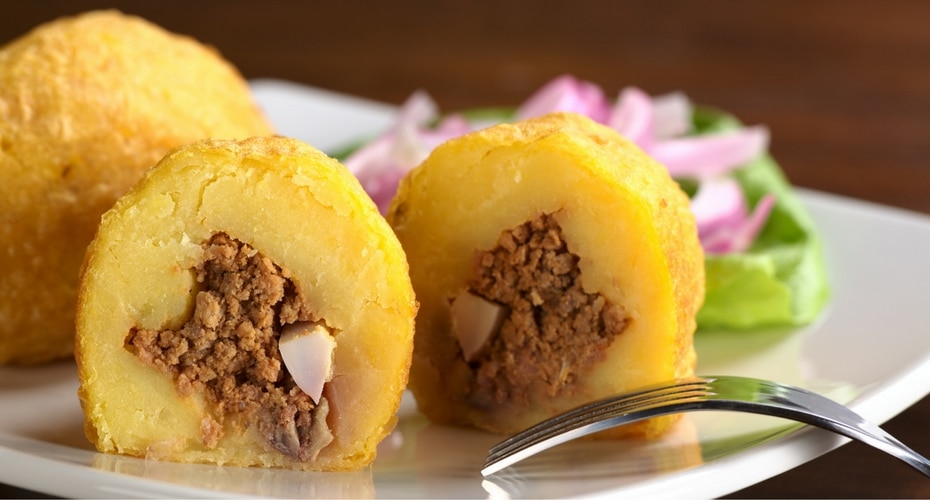
Asopao de Pollo: Asopao de Pollo is a comforting Puerto Rican stew that resembles a cross between a soup and a risotto. This hearty dish is made with chicken, rice, sofrito—a flavorful cooking base of tomatoes, bell peppers, onions, and garlic—along with olives, capers, and sometimes pigeon peas.
The rice absorbs the rich broth flavored by the chicken and sofrito, thickening the stew and enhancing its flavors. Often spiced with cumin, bay leaves, and cilantro, asopao de pollo is a go-to dish for warming up during the rainy season or serving a hungry crowd at family gatherings. It’s not only a meal but also a bowl of comfort, showcasing the homestyle essence of Puerto Rican cuisine.
Flan:
Flan is a creamy and smooth dessert that is a beloved classic in Puerto Rican households. This caramel custard is made by pouring a rich mixture of eggs, condensed milk, evaporated milk, and vanilla extract over a layer of caramelized sugar, then baking it in a water bath until set. The result is a silky, melt-in-your-mouth texture topped with a sweet, amber-colored caramel sauce that seeps down the sides when inverted onto a plate. Flan’s elegance and simplicity make it a favorite choice for concluding meals on a sweet note, whether at casual family dinners or at festive celebrations.
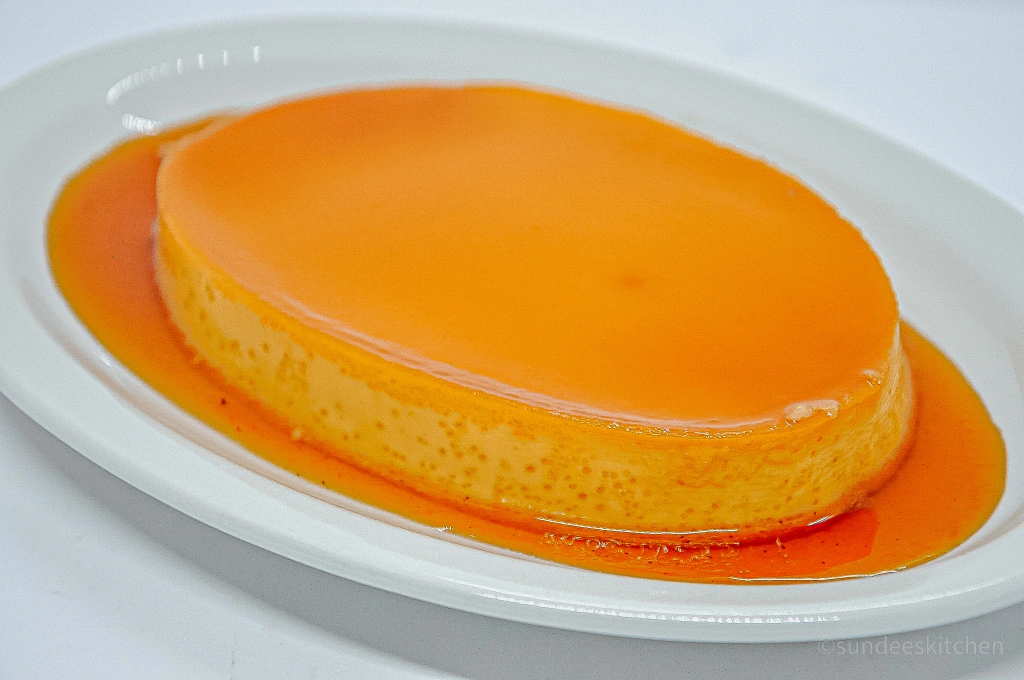
Tembleque:
Tembleque, which means “wiggly,” is a coconut pudding that embodies tropical flavors in a simple, yet sophisticated dessert. Made with coconut milk, sugar, and cornstarch, this dessert is set until firm but still tremulous, often garnished with cinnamon or toasted coconut flakes for extra flavor. The creamy consistency and refreshing coconut taste make tembleque a popular treat, especially during the holiday season, providing a light and delightful end to the rich, hearty meals commonly enjoyed in Puerto Rican cuisine.
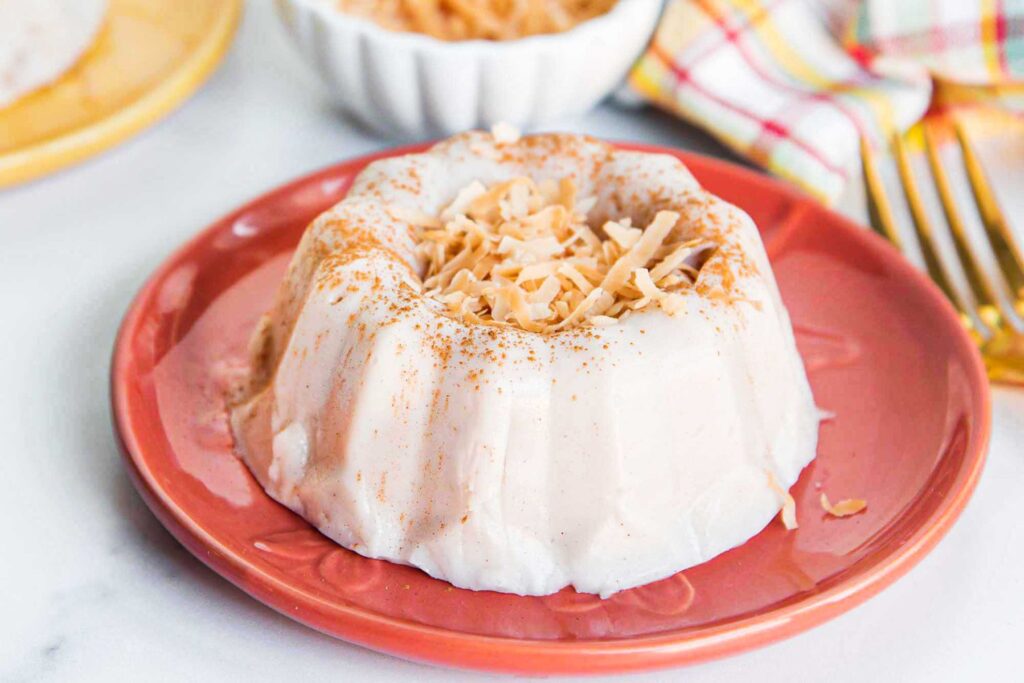
Morcilla:
Morcilla, Puerto Rican blood sausage, is a rich and savory link that combines cooked pork blood with rice and a mix of local spices such as garlic, cilantro, and chili peppers. This sausage is typically grilled or fried until the skin is crispy and served as part of a larger meal that includes other grilled meats and side dishes. Morcilla is especially popular during outdoor cookouts and is cherished for its unique flavor profile that offers a deep, umami-packed taste contrasting beautifully with the lighter, starchier components of a traditional Puerto Rican feast.
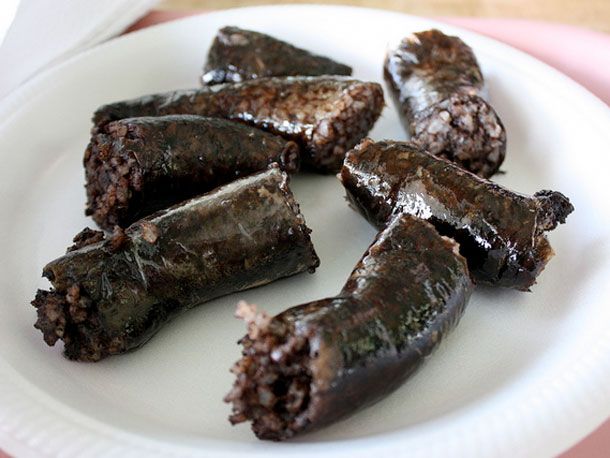
Sorullitos de Maiz:
Sorullitos de Maiz are sweet or savory cornmeal fritters that are a beloved snack in Puerto Rico. These small, finger-shaped treats are made from a dough of finely ground cornmeal, mixed with milk, butter, sugar, and salt, which is then deep-fried to golden perfection. Often served with coffee or as a side dish with meals, sorullitos can be plain or stuffed with cheese for a gooey, savory filling. Their crispy exterior and soft, doughy interior make them irresistibly snackable, perfect for any time of day.
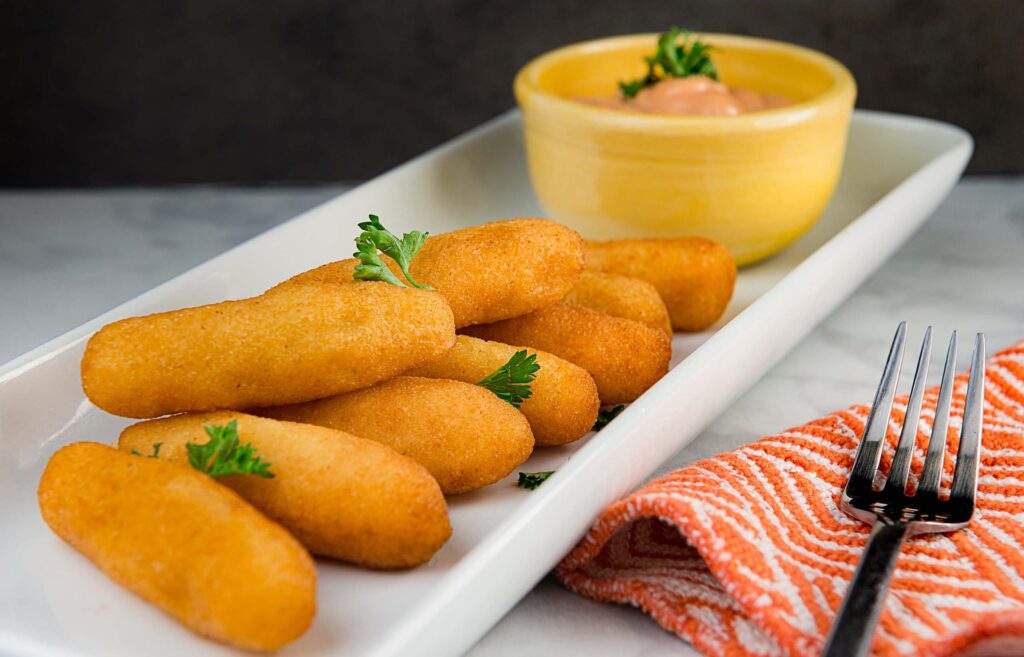
Jibarito:
The Jibarito is an innovative sandwich that originated from the Puerto Rican community in Chicago but has won hearts on the island as well. Instead of bread, fried green plantains are used to sandwich layers of steak, lettuce, tomato, mayonnaise, and cheese. The plantains provide a crispy, savory alternative to bread, adding a tropical twist to the familiar format of a sandwich. Jibaritos pack a delightful combination of textures and flavors, making them a popular choice for a hearty lunch or dinner.

Coquito:
Coquito is a traditional Puerto Rican holiday drink that resembles eggnog but with a tropical twist. This creamy beverage is made from coconut milk, rum, sweetened condensed milk, vanilla, and a sprinkle of spices like cinnamon and nutmeg. Served cold, coquito is often enjoyed during Christmas and New Year celebrations, bringing warmth and joy with its rich, sweet, and spicy flavors. It’s a festive favorite that embodies the spirit of Puerto Rican hospitality and celebration.
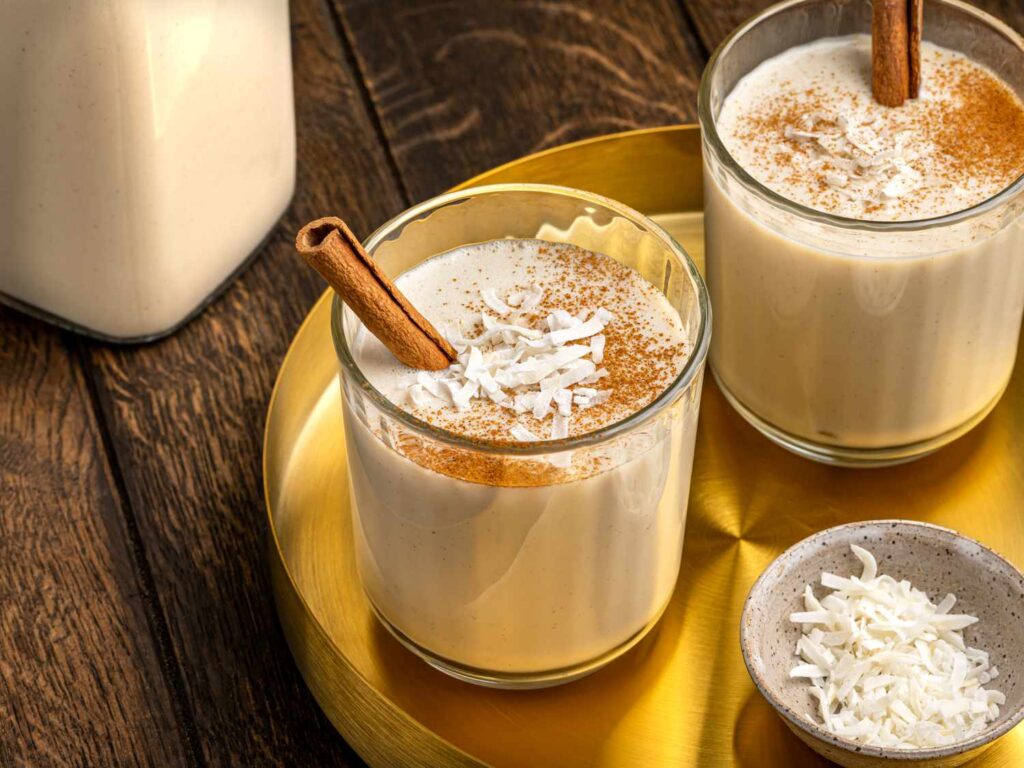
Camarones al Ajillo:
Camarones al Ajillo is a simple yet exquisite seafood dish featuring shrimp sautéed in a fragrant garlic and olive oil sauce, often with a splash of white wine. This dish is garnished with fresh parsley and served with a side of crusty bread to soak up the delicious sauce. The garlic enhances the natural sweetness of the shrimp, making this dish a favorite in coastal regions and a staple in Puerto Rican seafood cuisine.
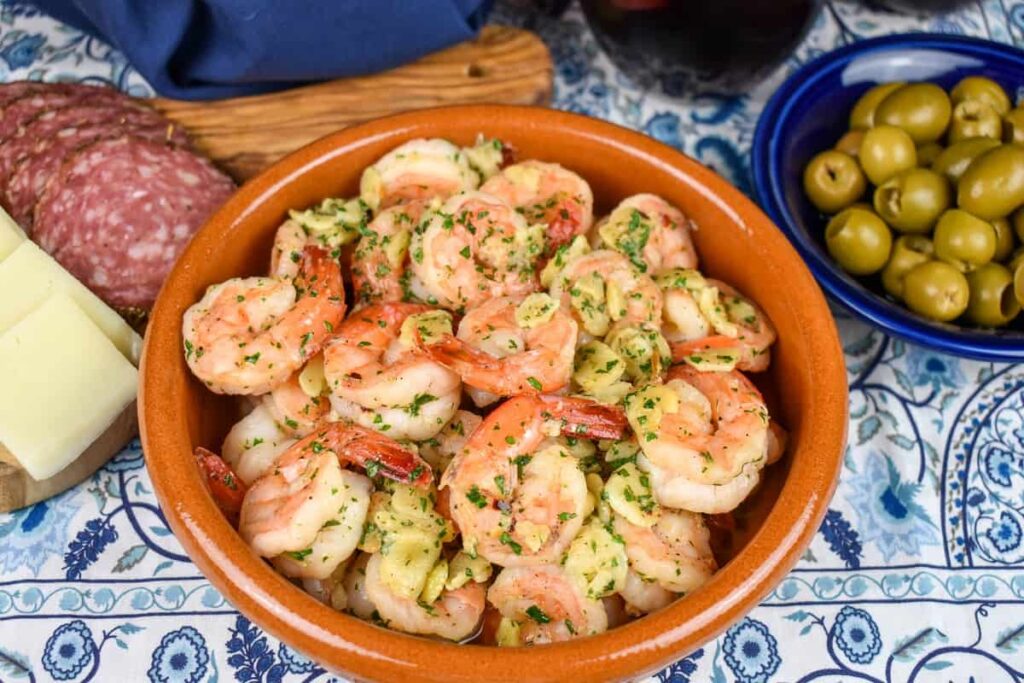
Carne Guisada:
Carne Guisada is a hearty Puerto Rican beef stew, slow-cooked until the meat is tender and succulent. The stew includes chunks of beef, potatoes, and carrots, all simmered in a rich, tomato-based sauce with onions, bell peppers, garlic, and a blend of spices. This comforting dish is often served with white rice, which absorbs the flavorful sauce, making it a satisfying meal perfect for family dinners and cold nights.
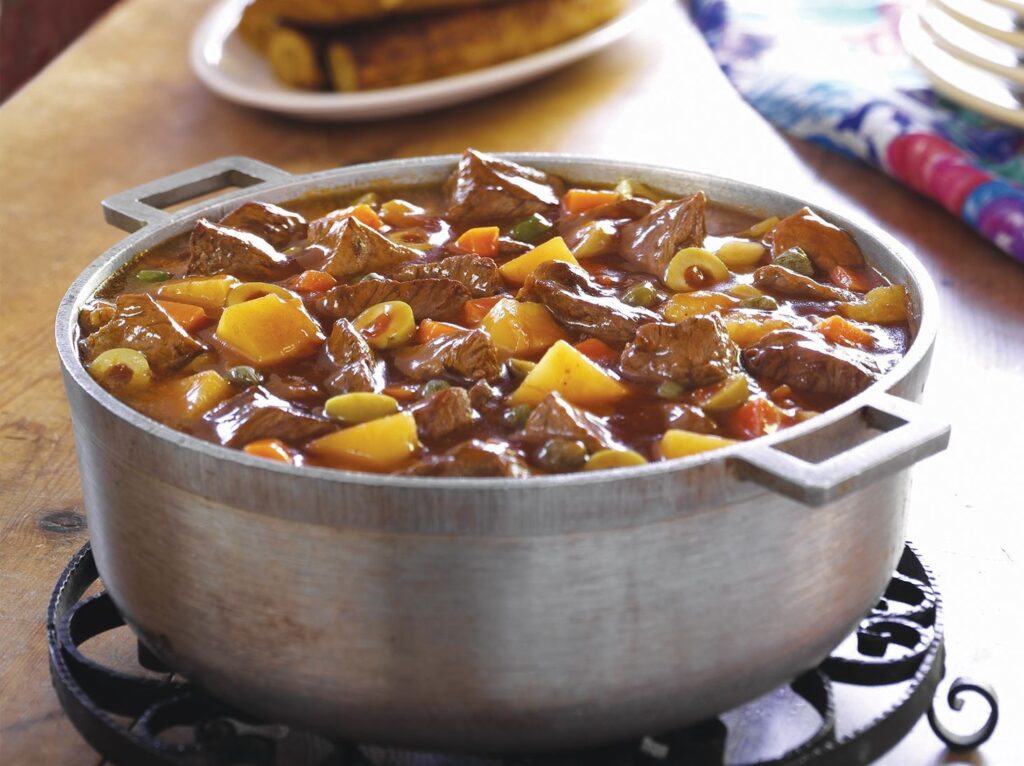
These 18 dishes offer a delicious snapshot of Puerto Rican cuisine, celebrating its complex flavors and cultural diversity. Each dish brings its own unique flavor and story to the table, making Puerto Rican food a true culinary treasure.
Conclusion
Puerto Rican cuisine is a vibrant tapestry of flavors and influences, showcasing a rich cultural history through its diverse and delicious dishes. From the hearty satisfaction of mofongo and pernil to the sweet, creamy delights of flan and tembleque, each dish offers a unique glimpse into the island’s culinary traditions. These recipes are not just food; they are a celebration of Puerto Rico’s communal spirit and its fusion of Taino, African, and Spanish heritages.
Whether you’re enjoying the crispy crunch of tostones, savoring the rich broth of asopao de pollo, or toasting with a glass of festive coquito, Puerto Rican cuisine promises a delightful experience that resonates with warmth and hospitality. Exploring these dishes invites us to appreciate not only the flavors but also the stories they carry, making every meal a journey through the heart of Puerto Rico’s vibrant culture.
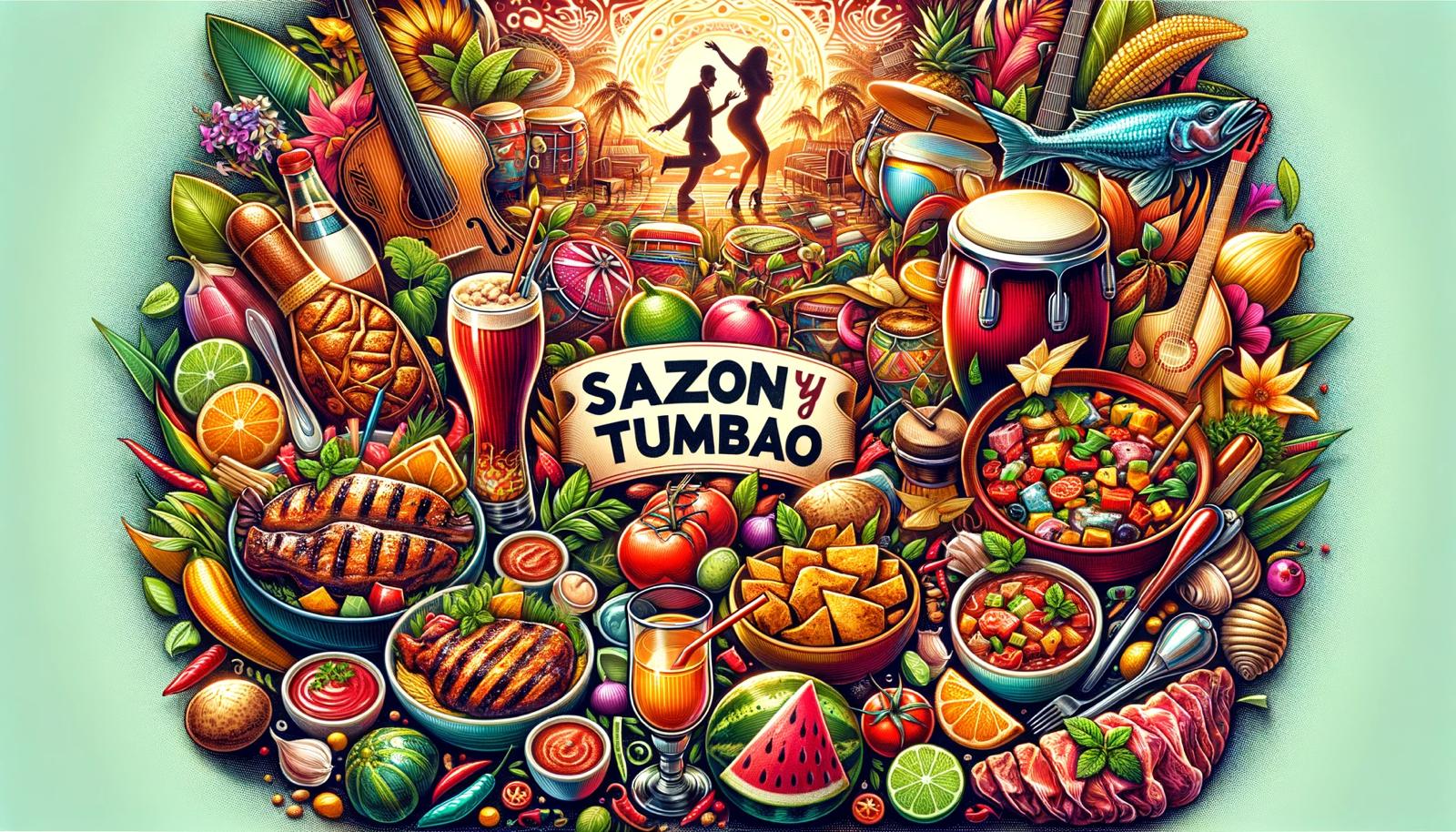
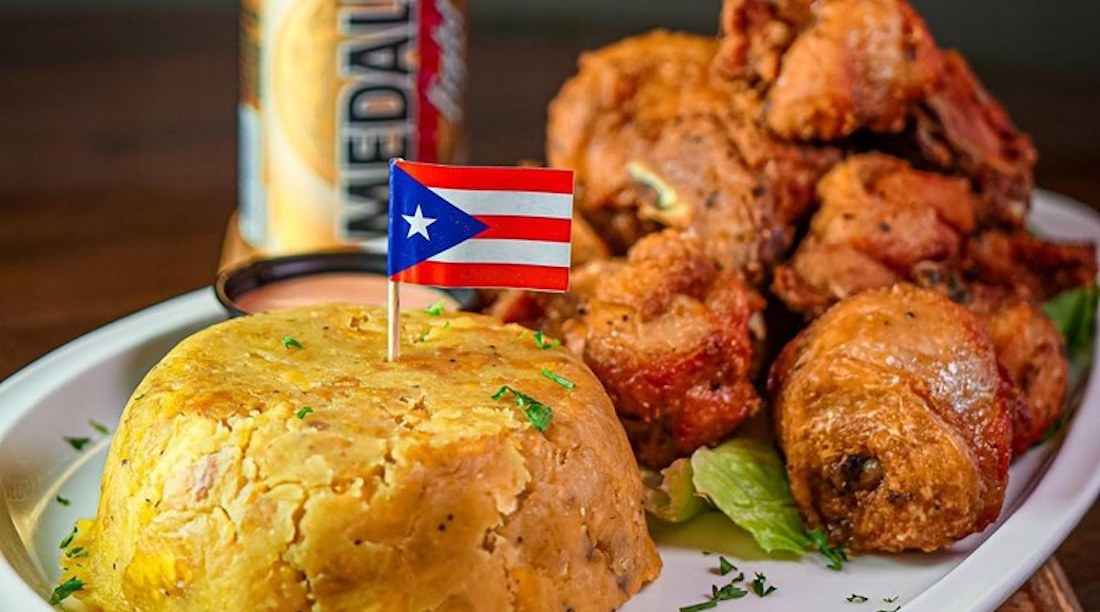

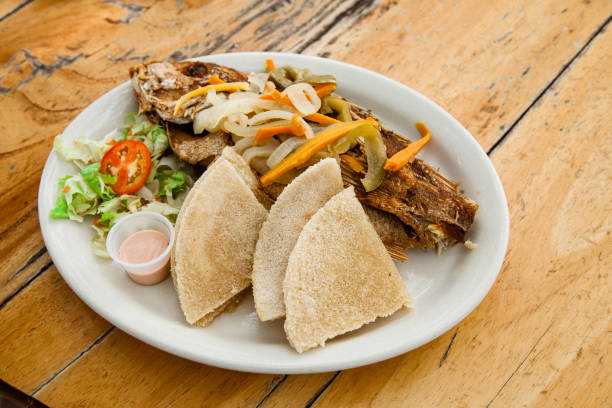

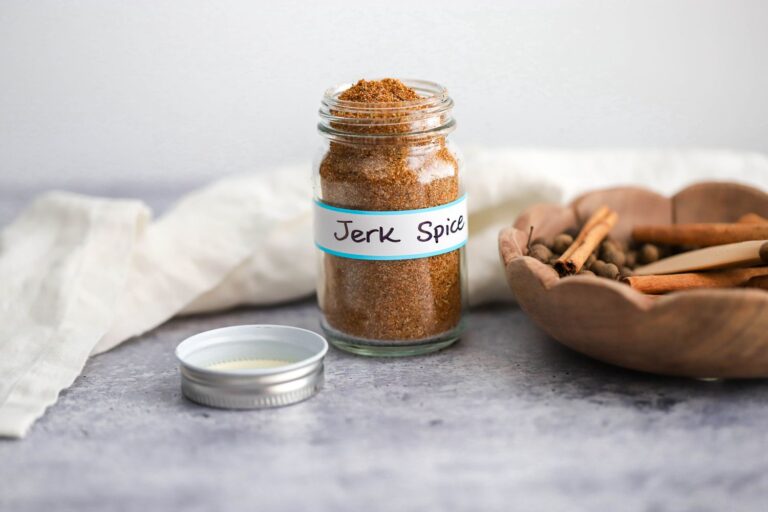

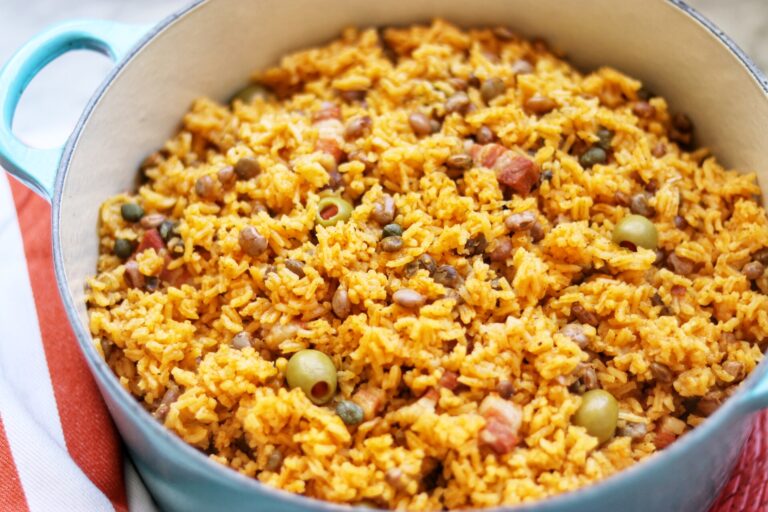
One Comment